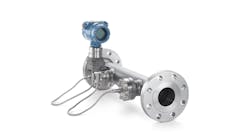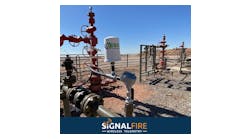by Matt MiglioreAs manufacturers continue the never-ending quest to improve process efficiency, one would think the pump – the driving force behind most fluid handling systems – would be viewed as a key area of opportunity for savings. However, such is often not the case, as many end-users still view pump specification from a component selection and first-cost perspective rather than from a larger systems design and lifecycle cost point-of-view. And while the advent of pump and pipe modelling software has taken some of the complexity out of selecting pumps and determining pipe dimensions and design points, these tools, in and of themselves, do not effectively address the issue of pumping systems optimization.Pumping Efficiently"One of the easiest and often overlooked ways to make a dramatic impact on process performance is through pumping systems efficiency," says Mike Pemberton, manager of energy performance services for ITT’s Plant Performance Services segment (Figure 1). In order to ensure the efficiency of pumping systems, Pemberton says users must broaden their view from a focus on the pump itself to include all of the relevant system components and application parameters that ultimately affect the pump’s performance over time. By doing this, users will be forced to consider not only the up-front cost of the pump, but also the lifecycle costs of the entire pumping system.
"End-users often have written pump specifications that dictate the type of pump components and sometimes component efficiency, yet the specification does not dictate the overall system efficiency," says Pemberton. "The ultimate goal should be to deliver the fluid with a system that has maximum reliability and minimum energy costs." As such, he advises users to write system efficiency requirements directly into their pump specifications. Then, if a fixed-speed design can”t meet the system efficiency range requirements, alternate configurations, such as multi-pump or variable-speed control, can be considered.
According to Pemberton, lifecycle costing requires tools and techniques that are not commonly found within end-user facilities. As such, he recommends end-users work with a reputable supplier to ensure they have a firm grasp on the total operating cost of the pumping systems they are designing. Pemberton also cites Pump Systems Matter – an initiative sponsored by the Hydraulic Institute (HI) and pump-related companies – as an organization that offers education, guidebooks and tools to assist in the lifecycle costing process. Pump Systems Matter’s core focus is on the energy, efficiency and economics of pumping systems.Pre-Design PhasePrior to actually designing a pumping system, end-users should gather certain key pieces of information to ensure the system is optimized to meet the application needs. Greg Case, president of Pump, Design Development & Diagnostics LLC (PD3), and an HI "Standards Partner," says it is critically important for the end-user to have a strong understanding of the actual day-to-day requirements of the system. He says guesstimates will not suffice, and building the system to meet the requirements of the "100-year-flood" scenario typically results in a pumping system that is rather inefficient under normal operating conditions. If emergency protection is a key requirement for the system, Case says the end-user should take a modular approach in building up the system to meet such extreme scenarios. For example, he says rather than employing a really large pump for an application that typically does not require it, an end-user would be wise to deploy a pump that better meets the day-to-day application needs, with a second pump in parallel that can kick on to support periods of high demand. Or, in instances where high flow results in high piping friction, Case says a variable-frequency drive (VFD) could be used to effectively support periods of peak demand. By entering the design phase armed with relevant application information (fluid properties, viscosity, etc.) and a full understanding of the system requirements, Case says users will be prepared to intuitively make smart decisions about how to build an appropriate pumping system for their application needs. Prior to entering the design phase, ITT’s Pemberton says it is important for the end-user to identify a project partner that can assist with the lifecycle costing process. "Pump manufacturers are increasingly offering services to help end-users and design engineers lifecycle cost their systems early in the design process," says Pemberton. "To accomplish this requires that preliminary design data be provided to the supplier; i.e., design point and various duty points."Best Practices & Pitfalls"It is often said that 90 percent of pump problems occur on the suction side of the pump," says Case. Given this, he says one of the most critical best practices end-users can employ to ensure the long-term reliability of their pumps is to, whenever possible, ensure the liquid level in the suction tank is above the inlet to the pump (suction head condition). Further, he says users should strive for a net positive suction head margin of 1.3 or three feet above the NPSHr of the pump, whichever is greater.
Outside the flanges of the pump, Case recommends five diameters of straight pipe between any elbow or device that abruptly changes the direction of flow and the pump inlet. While he acknowledges that a suction diffuser might enable a piping arrangement where it is possible to get away with less than five diameters, Case says some diffusers work better than others, and the user really needs to be sure the technology works before employing it in a tight piping scenario. "In my opinion, not having that five diameters is penny wise and pound foolish," says Case. "If you’re looking for best practices, that’s a best practice."Finally, Case recommends end-users expend the time and effort required to determine which pump will operate as closely as possible to the best efficiency point throughout the entire range of the application. "This will not only improve efficiency, but also reliability," he says.On the pitfall side, both Pemberton and Case agree that over-sizing the pump is most common mistake end-users make. According to Pemberton, pumps are typically oversized 25 percent or more to ensure a safety margin; i.e., the pump will never have a demand that exceeds its capacity. Unfortunately, he says such oversizing often results in excessive energy consumption and unreliability.
Pemberton cites a 1996 Finnish Technical Research Center report entitled “Expert Systems for Diagnosis and Performance of Centrifugal Pumps,” which revealed the average pumping efficiency across the 20 plants and 1,690 pumps studied was less than 40 percent, with 10 percent of pumps operating below 10 percent. Pump oversizing and throttled valves were identified as the two major contributors to the efficiency loss. "Besides hindering overall plant efficiency, poor pump performance can result in lower product quality, lost production time, collateral damage to equipment and inordinate maintenance costs," says Pemberton.According to Case, another key pitfall end-users run into is focusing too much on the capital costs and not enough on the lifecycle cost of the pump. He says that recent studies have shown that approximately 18 percent of the total cost of a pumping system is found in the up-front cost of the pump, including engineering, installation, and the cost of the pump itself. He says the remaining 82 percent of the cost can be found in maintenance and energy over the life of the pump, with the majority of that cost (approximately 78 percent) falling into the energy category. (See HI guidebooks, "Optimizing Pumping Systems" & "Pump Life Cycle Cost.")Still, Case says it is often difficult to get the end-user to understand the long-term savings that can be achieved by investing in a better – and perhaps more expensive – pump. He says this message is particularly difficult to communicate to management and accounting, as a new pump is generally viewed in the United States as a taxable capital expense, while the energy and maintenance costs over the life of a pump are typically tax deductions. Thus, in many cases, the incentive for investing in a more expensive and better-performing pump is not there from an accounting perspective. "Our current tax system is actually set up to penalize people for making good capital purchase that can reduce the lifecycle and energy cost of the system," says Case. Once the pumping system is designed and installed, Case says there is one last pitfall that many end-users fail to consider, and that is in verifying the performance of the pump. "Once the system is installed and it’s operating, the owner of the system or the contractor should test the pump to verify that it is operating where it was designed to operate," he says.Case points out that most pipe tables include a note indicating there is a 15-20 percent error factor from the published losses to the actual operating performance. As such, Case says it is important for end-users to determine where the pump is actually operating once it is installed so they can make the necessary tweaks to achieve the designed performance prior to entering the pumping system into the production cycle.The Future of Pumping Systems DesignGoing forward, Case says the pumping systems design figures to become more and more user-friendly, as free online tools for pipe modelling and pump sizing take a lot of the tedious math out of the process. He says current-generation online tools are capable of performing the system loss calculations as well as compensating for different liquid properties such as different specific gravities and viscosities. Many include features to allow the user to simulate the use of parallel pumps and/or variable speed drives in the system. The best of these programs also allow the user to calculate the lifecycle cost to determine the right pump for the job, not just the cheapest. This allows the person selecting the pump to get all of the relevant technical information, as well as develop a business case for the pump selection for upper-management and accounting.Case says end-users can also look forward to a closer relationship between online tools and equipment data, as more manufacturers provide access to their pump curves. From his perspective, Pemberton says he expects to see a cultural shift among pump users in the years to come, as it becomes more difficult to ignore the lifecycle costs involved with inefficient pumping systems. Along this line, Pump Systems Matter is currently working with its sponsor OEMs, utilities, and energy efficiency NGOs to help move the focus from up-front costs to lifecycle costing."Today, the total installed costs of a new pumping system is typically less then 10 percent of its operating costs, and in systems that become bad actors – resulting in inordinate energy and maintenance costs – the total installed costs may be less than 4 percent of lifecycle costs," says Pemberton. "Lifecycle costing a system before finalizing design will increasingly become a required practice in future years. The economic benefit of utilizing lifecycle costing to drive design decisions is too compelling for all stakeholders to overlook."Matt Migliore is the editor in chief of Flow Control magazine. He can be reached at 610.828.1711 or [email protected].





